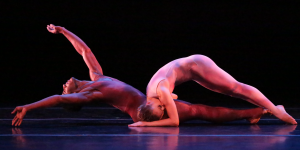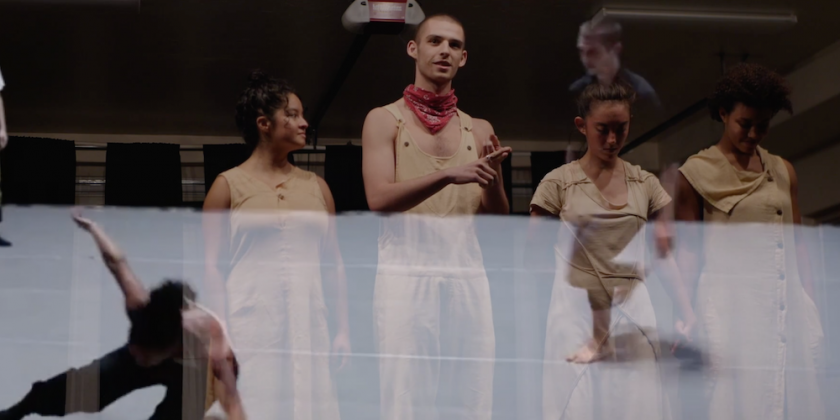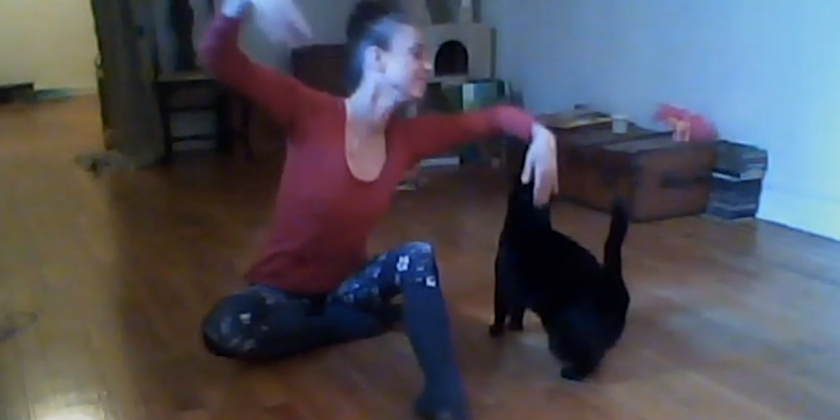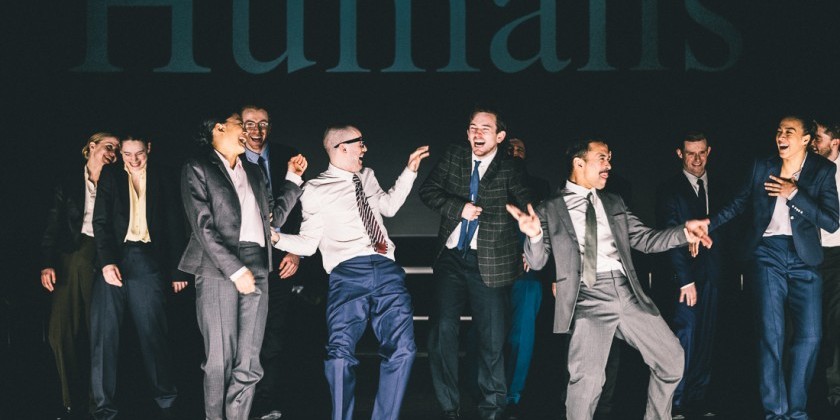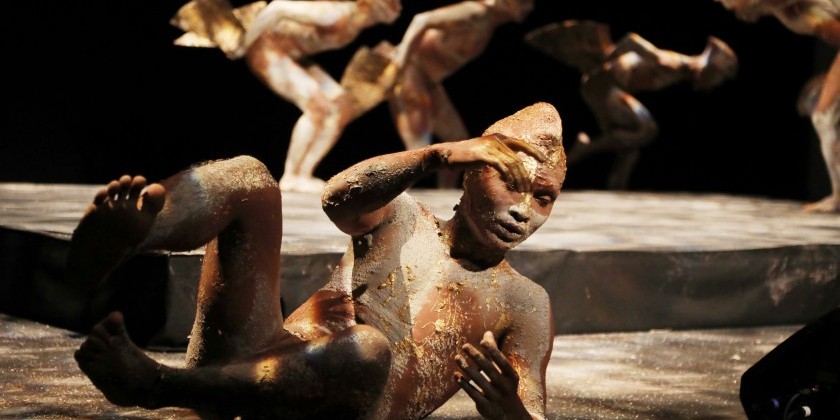Impressions of Dance in France: Blanca Li's "Déesses et démones"
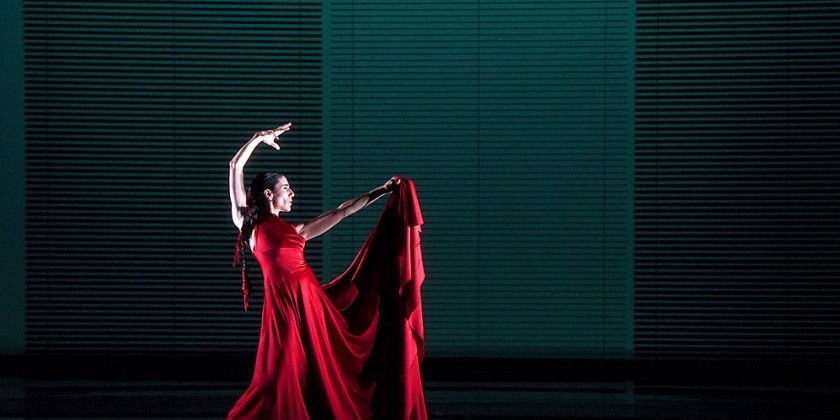
Artistic Direction and Choreography: Blanca Li / Dancers: Maria Alexandrova, Blanca Li
Music: Tao Gutierrez with Enrico Barbaro, Gherardo Catanzaro, Carlos Koschitzky and directed by Carlos Martin / Sets: Pierre Attrait / Videography: Charles Carcopino
Lighting: Caty Olive / Costumes: Azzedine Alaia, Jean-Paul Gaultier, Stella McCartney, Sophie Théallet / Accessories: John Nollet Paris / Designer Accessories: Erik Halley
December 22, 2015 to January 3, 2016
Théâtre Champs-Elysees, Paris
Blanca Li has put a solid and powerful structure in place for her work Déesses et démones (Goddesses and Demonesses). The lighting, by Caty Olive, and sets, by Pierre Attrait, speak with a simplicity that borders on brilliance. The designer swaths of flowing fabric are undeniably beautiful. Charles Carcopino's video projections carry the vision of the work forward magnificently. Both performers, Blanca Li and Maria Alexandrova (a principal dancer with the Bolshoi Ballet), are excellent dancers. It is unfortunate that the work is hampered by the choreography that seeks to support it.
Déesses et démones begins with thin lines of light bridging the vast expanse between the stage floor and rafter sky. A deep, velvet sea of darkness cradles the glowing columns with a tenderness that gives them form — a great start to any tale that speaks of gods and demons or, more precisely, goddesses and demonesses.
A giant venetian window blind at the back of the stage snaps open. Harsh white light forces its way through the horizontal cracks to press around the silhouette edges of a dancer, Alexandrova, a thoroughbred racehorse of an athlete. Her lean, muscular body creates one beautiful sculpture after another, but the poses never extend beyond static clichés.
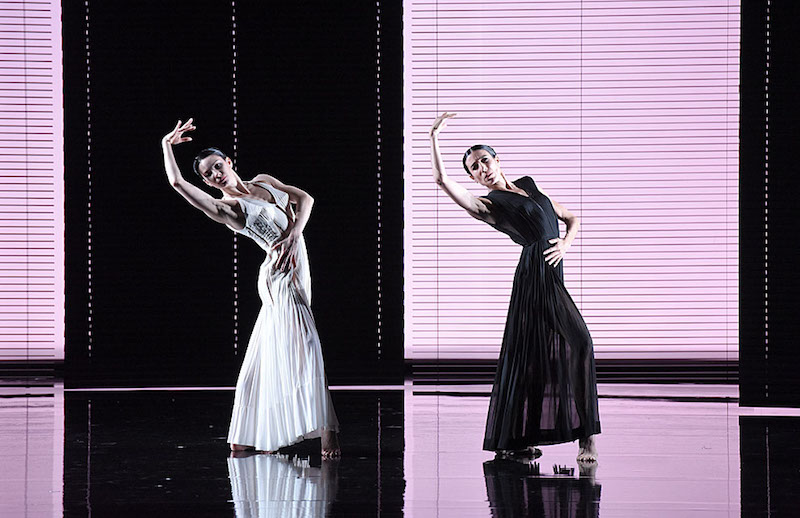
Light and shadow are quickly replaced with white and black: one half of the stage white, the other black; Alexandrova, in a long white gown; Li, in an even more gorgeous black one. The two women attempt to dance the same steps at the same time, but they never really move in synch, nor out of synch enough for us to believe that their choice is intentional. It is as if they disdain the cardinal rule of unison dancing: to follow the downstage dancer’s timing even if the leader is wrong.
The two women confront one another, forehead-against-forehead in the center of the stage. Possibility positively sizzles. What happens when two such powers meet? The instant revert to a standard high school partnering sequence (Alexandrova scooping up Li in an easy split lift circling around her axis), repeated again and again, is disappointing. The dancers remain self-contained and unchanged. The space remains unaffected. If their immutability is, in fact, the point, then this is not clear enough. And either way, it is not interesting choreographically. A standardized indication of partnering is not a relationship.
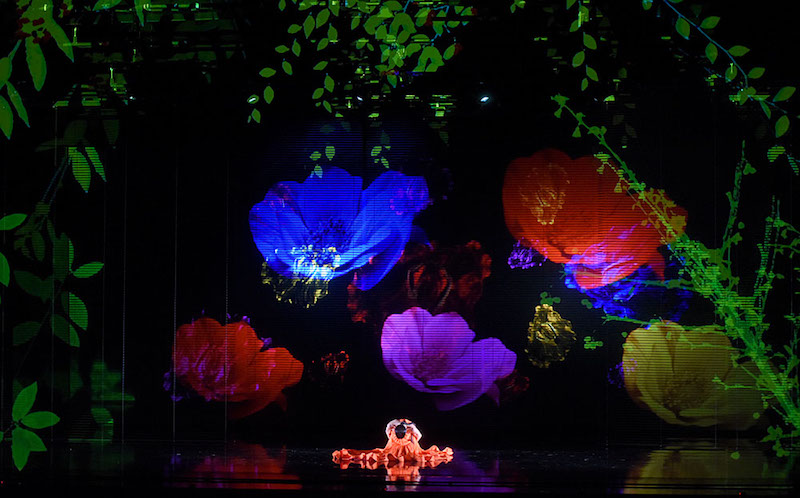
Astonishingly, the work holds together in spite of the choreographic choices. The video projections flow seamlessly with the lighting, the set and the dance to convey the vision that is foundational to this work: that chaos and harmony are inter-related rather than polarized forces.
I cannot speak highly enough of the projections and lighting: sparkly clouds of static shift through the space like flocks of birds, or bugs, or butterflies; snakes creep together to create a giant three-dimensional nest we feel we could step into: roots in the dark underbelly of the earth give birth to an array of vibrantly colored poppies. A projected dancer is revealed in the heart of each as they float around Li who swirls in a skirt of red.
There are other lovely moments of movement too — like an intricate gestural sequence where the dancers’ hands trace their breasts, their bellies, their guts like a breath of wind — but these moments are too often undeveloped, abandoned or aborted. For the most part, the performers remain ornamental rather than essential. The few times they allow themselves to be a part of the larger whole, rather than apart from it, the work becomes simply captivating.





